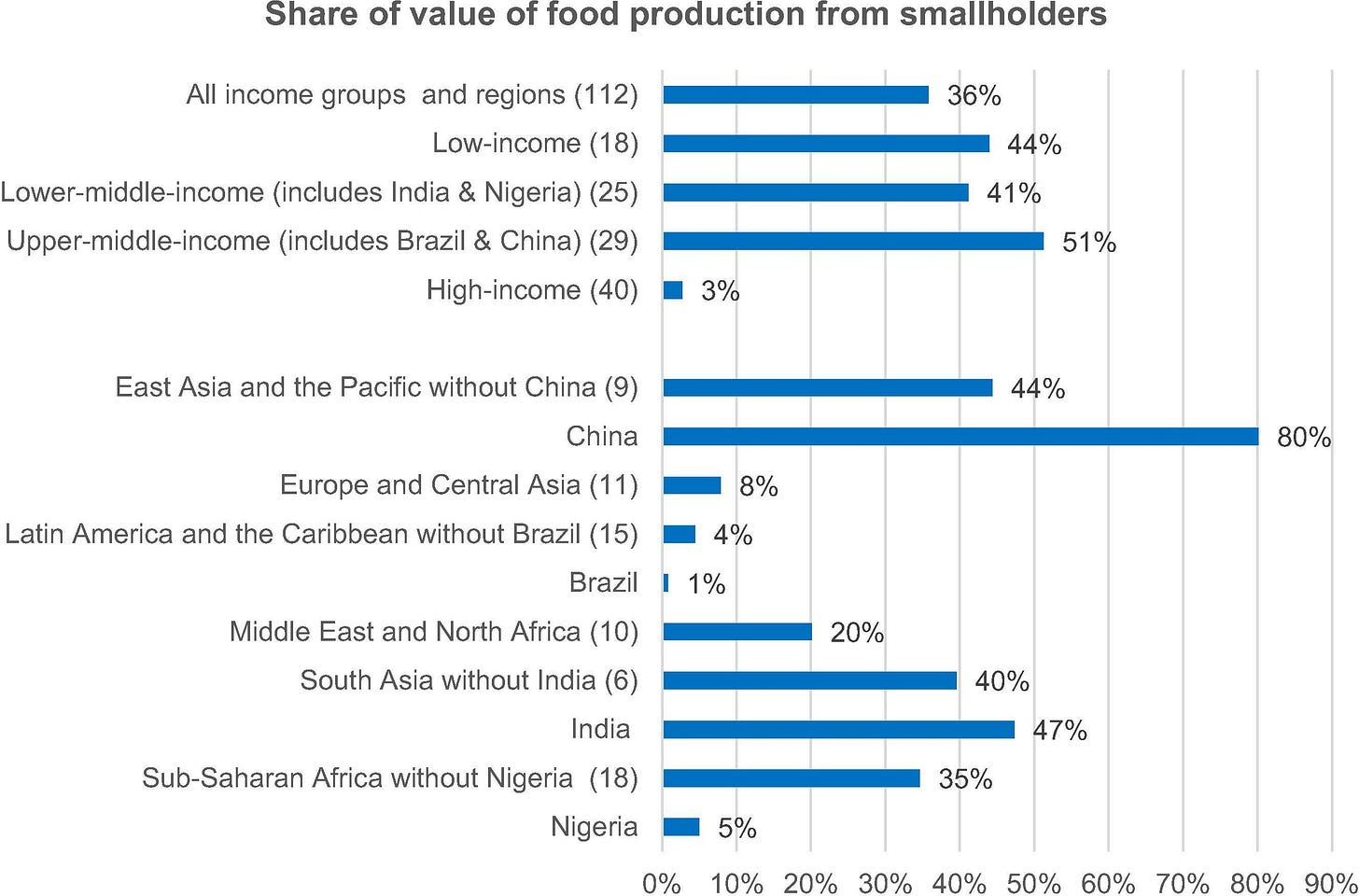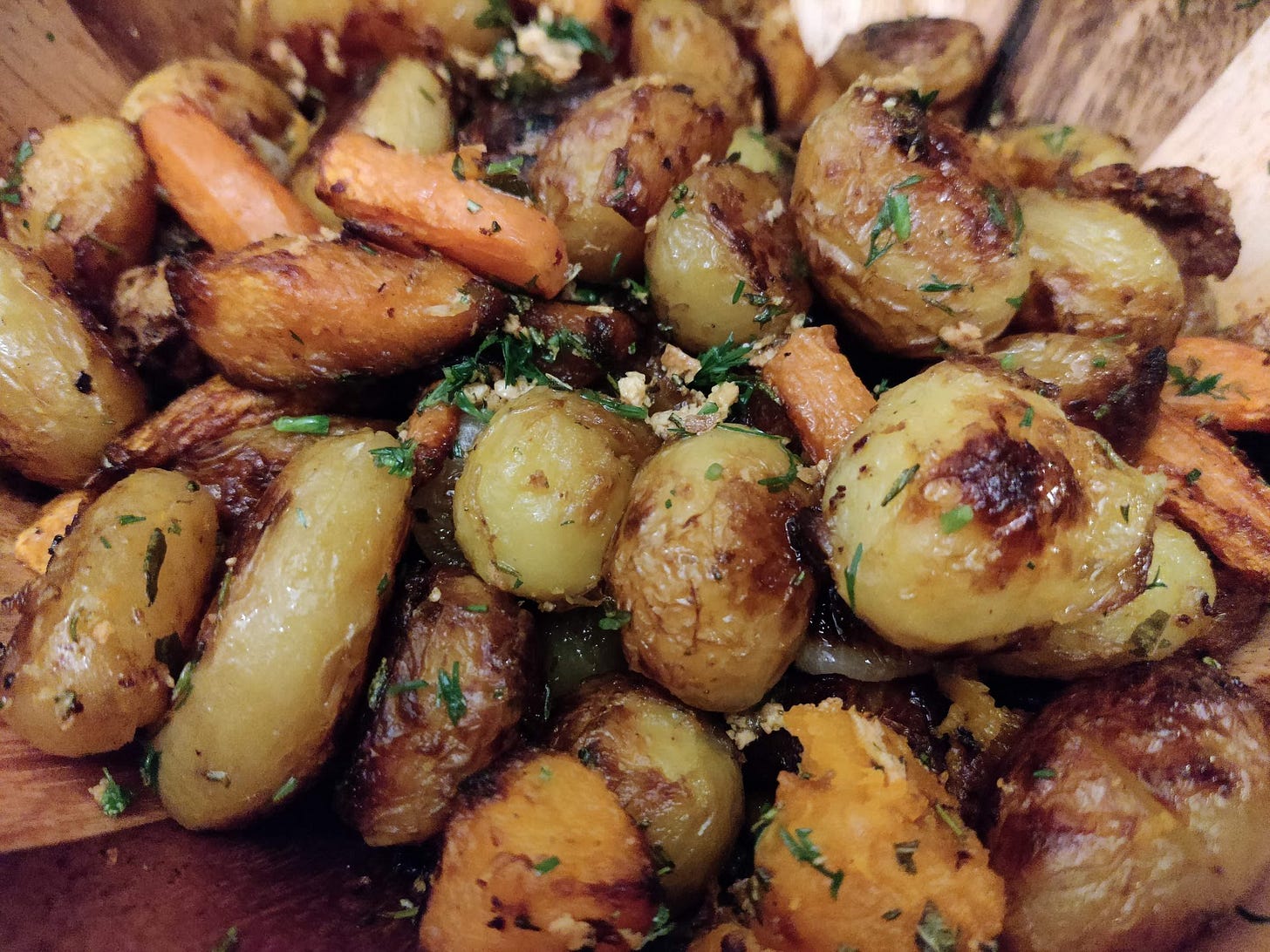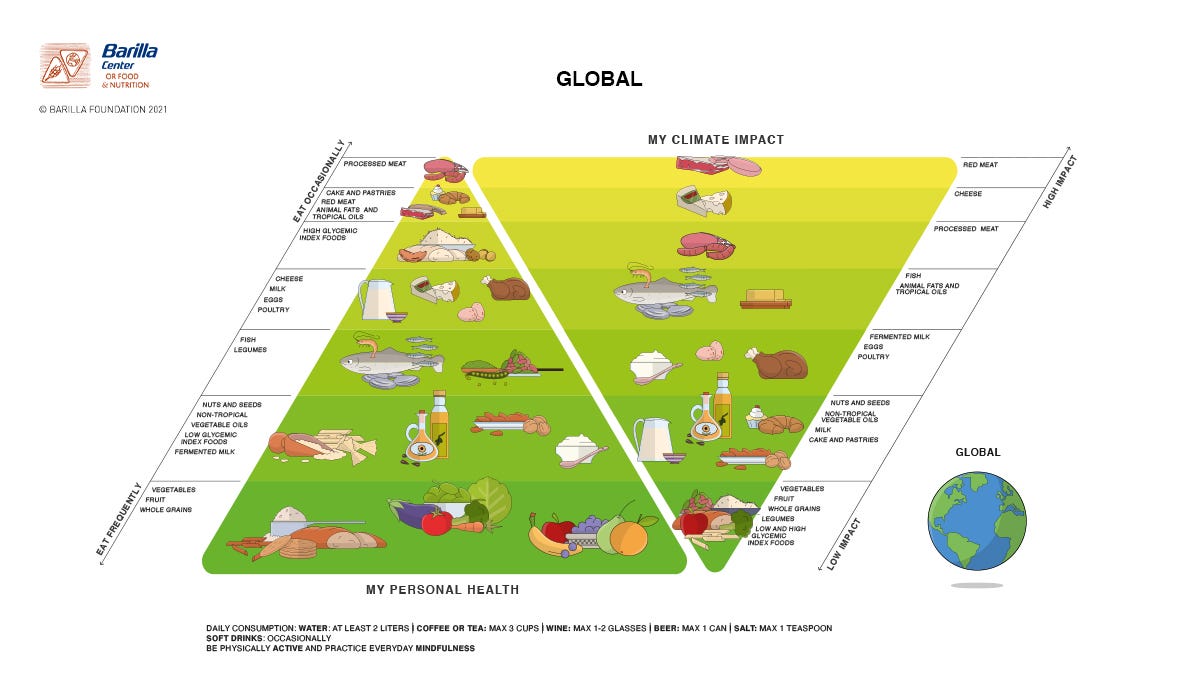What's for dinner?
A newsletter about food systems, climate change and everything connected to them
It’s been a big week, with Earth Day events and Biden’s climate commitments, but others have covered all that so I’m sticking to the food theme.
Self-promo Alert! My debut at The New Humanitarian
I’ve written before about how 2021 could be a crunch year for food systems, partly because of a few high-profile summits scheduled this year that will tackle the interconnected issues of food, climate change and everything in between.
Foremost among them is the Food Systems Summit which is happening on the sidelines of the U.N. General Assembly in New York in September, with a pre-Summit event scheduled in Rome in July.
I took a deep dive into why the Summit is being held, what is at stake and what are some of the criticisms around it for my first piece for The New Humanitarian, a non-profit news organisation that does what it says on the tin - it focuses on humanitarian issues, from disasters and conflicts to humanitarian aid and policy.
Some of you might know them from their previous existence as IRIN News, founded by the U.N. in 1995 in the wake of the Rwandan genocide. They were spun off a few years ago and are now totally independent.
They have also become one of a handful of organisations who are really holding the U.N. and the aid industry into account, and I’m not saying that because I plan to continue writing for them on the linkages around food systems, climate issues and humanitarian crises.
Climate-friendly diets - aspirational but not realistic?
Here’s something that made me go hmmmm….
Young people have been very vocal about their concerns for the climate and how inaction by political leaders, mostly belonging to the older generations, is leaving them with a very bleak future.
But a new analysis by the World Resources Institute (WRI) - I know I quote them a lot but they do some really interesting stuff! - seems to show that young adults (20 - 34 years) in the U.S. and the UK are buying more meat, despite seeing meat-free diets as “the aspirational choice”.
The authors found -
- In the U.S., young adults are eating the same amount of processed “deli” meat but are shifting away from red to white meat.
- Youths are eating more white meat in the UK too but NOT (emphasis mine) as a replacement for red meat. In fact, red meat consumption remains level across all age groups, which means the younger generation is eating more meat overall (see chart above).
- Data from UK supermarket chain Sainsbury’s showed that between 2017 and 2020, sales of meat, fish or poultry jumped by a whopping 32% among shoppers aged 18-24. Of course, they could all be buying fish but that’s pretty unlikely (see below).
It has long been established that animal agriculture - beef in particular - accounts for a fair amount of greenhouse gas emissions heating up the planet, not to mention the deforestation and environmental degradation. So why the disconnect between youths’ environmental values and their dietary habits?
“Behavioral science has shown that, more than information campaigns, dining and retail environments are a big influence on what a person chooses to buy or eat. We may go into a grocery store planning to buy only healthy or sustainable food, but what we end up putting in our cart is driven much more by habit, familiarity or displays in the store,” the authors said.
They added that responsible retailers and food service providers could curtail meat-heavy advertising on social media and in-store, offer more tasty-sounding plant-based options, and ensure they are convenient and affordable.
How about workplace cafeterias?
Speaking of food choices, a study that came out yesterday said if you are going out for lunch with a co-worker (What’s that? I’ve forgotten what it’s like to eat with people not from your household), the decision on whether you end up eating a salad or cheeseburger very much depends on what they choose.
The study is based on meal decisions of approximately 6,000 employees of the Massachusetts General Hospital (MGH) at the hospital's seven cafeterias over two years. The employees come from a diverse range of ages and socioeconomic status.
The researchers at MGH’s Mongan Institute Health Policy Research Center said “cross-sectional and longitudinal assessments of 3 million encounters between pairs of employees making cafeteria purchases together” showed that “food purchases by people who were connected to each other were consistently more alike than they were different”.
Now I don’t know what the limitations of the study are because it’s pay-walled (grrrr….) so we will have to rely on their PR here.
They do suggest, however, that one way to influence people to eat more healthily might be “to target pairs of people making food choices and offer two-for-one sales on salads and other healthful foods but no discounts on cheeseburgers”.
Let’s talk about “Nutrition Security”
Perhaps we all need to start looking at food, health and climate change from a broader perspective too?
“For decades, US policies to address hunger and food insecurity have focused largely on providing sufficient calories or quantities of food,” said a recent article in JAMA medical journal by three nutrition and food bigwigs who called the powers-that-be to move away from food security to “the broader concept of nutrition security” to tackle the current diet-related challenges in America.
The authors are Dariush Mozaffarian (dean at Tufts Friedman School of Nutrition Science and Policy), Sheila Fleischhacker (adjunct professor at Georgetown Law) and the Spanish chef José Andrés (his World Central Kitchen has been integral in keeping tens of thousands of people alive during COVID-19).
They are talking about the U.S. - where an estimated 56% of children apparently have diets of poor nutritional quality - but they might as well be talking about the rest of the world.
Our narrow focus - or obsession - with crop productivity at the expense of health and nutrition is one of the reasons why the world is now grappling with multiple forms of malnutrition.
I know I keep banging on about this but really, it’s no longer enough just to have food. That food must be good too.
A double pyramid for food, health and climate
Last week, the Barilla Foundation - yes the makers of pasta, apparently the world’s largest, according to Wikipedia - and the University of Naples Federico II published a report that aims to do just what the authors above suggested.
They’ve come up with a “double pyramid” that takes into account foods that are good for your health, climate-friendly and culturally appropriate.
You don’t need to read the full report if you don’t want to - in fact, the layout makes it quite difficult to read it online - but the explanations behind the pyramids (page 13-14 and 17-18) are interesting, as are the pyramids adapted into seven world regions, taking into account local culture, in the “Results” section.
But if you just want bite-sized nuggets, the regional pyramids and explanation on the double pyramid are all in one place here. There are also some interesting recipes from each regions (the chickpea ravioli and smoked eggplant looks particularly yummy).
The report makes 10 recommendations (page 57-58), including redirecting agricultural subsidies, the adoption of greener food procurement policies, and educational initiatives for farmers, producers and the public.
New Netflix food show (happy emoji)
Food programs on the telly - not just cooking ones - are my happy places. Except perhaps when I’m very hungry and there’s nothing to eat. Then they are the worst.
But anyway, Netflix is debuting a docu-series on May 26 called High on the Hog that will celebrate African food culture and its influence on America, according to Eater.
The show is based on the James Beard Award-winning author and food historian Dr. Jessica B. Harris’s book of the same name.
I cannot wait.
Small family farmers produce a third of world’s food
New research from FAO - the U.N. food and agri agency - provides really useful data on the importance of smallholder farmers. We’ve always heard aid agency and farmer advocates talking about their role but the numbers haven’t been this concise or this detailed.
I only came across the paper this afternoon (Apr 23) so I haven’t had a chance to look through it in detail but here’s some figures at a glance -
Five of every six farms in the world consist of less than two hectares
They account for only about 12% of all agricultural land
But produce roughly 35% of the world's food
The largest 1% of farms in the world - greater than 50 hectares - operate more than 70% of the world's farmland
Globally, there are more than 600 million family farms (note - this is different from small farms) around the world, occupying between 70% and 80% of the world's farmland

Fig. 5. Share of value of food production from smallholders, by region and income grouping. (Note: number of countries in parentheses). Sources: authors’ compilation using FAO, 2001, FAO., 2013 and agricultural census reports from the 2010 census round (see “Sources: Agricultural census reports and information consulted” in the web Appendix B). Value of food production is from FAO (2020a).
As always, have a great weekend! Please feel free to share this post and send tips and thoughts on twitter @thinink, to my LinkedIn page or via e-mail thin@thin-ink.net.








